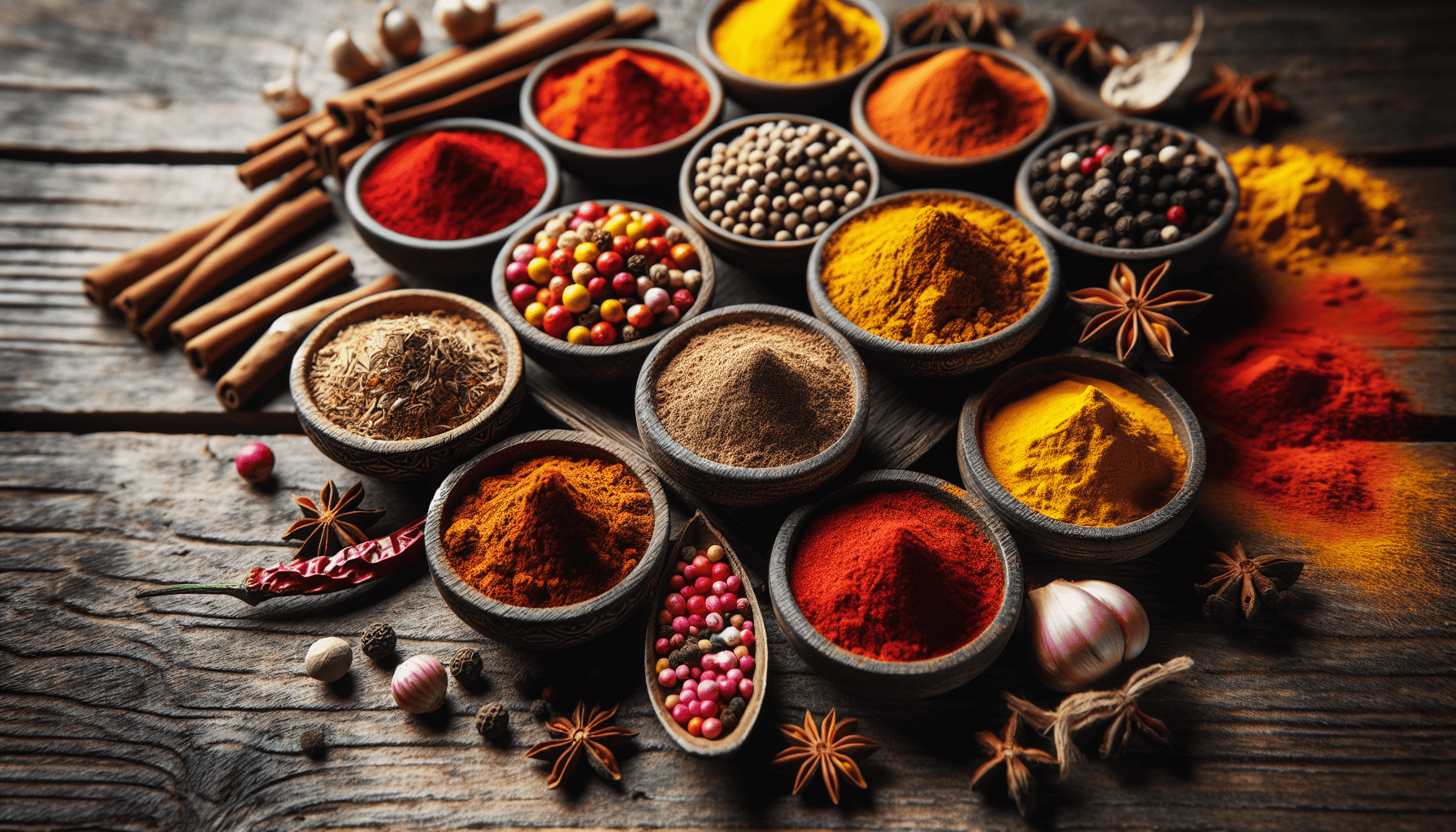India, known for its vibrant culture and rich culinary heritage, boasts a distinctive array of spices that have been an integral part of its cuisine for centuries. These humble ingredients, often small in size but powerful in impact, have the unique ability to transform any dish into a celebration of taste. Let's embark on a journey through the colorful and aromatic world of traditional Indian spices, exploring their origins, flavors, and their unparalleled potential in the culinary arts.
The Cornucopia of Indian Spices
Indian spices are as diverse as the country itself. From the snow-capped mountains of Kashmir, where saffron grows, to the tropical coasts of Kerala, where black pepper and cardamom thrive, each region contributes its own unique spices to the culinary tapestry.
1. Turmeric (Haldi): Often referred to as the 'golden spice,' turmeric is a staple in Indian kitchens. Known for its bright yellow color and earthy, slightly bitter flavor, turmeric is not only a key ingredient in curries but also revered for its medicinal properties.
2. Cumin (Jeera): This spice, with its distinctive warm, nutty flavor, is used extensively in Indian cooking. Cumin seeds are often fried in oil to release their aromatic properties before being added to dals, curries, and rice dishes.
3. Coriander (Dhaniya): Both the seeds and leaves of coriander are used in Indian cuisine. The seeds impart a citrusy flavor when ground, while the fresh leaves, known as cilantro, add a refreshing finish to many dishes.
4. Cardamom (Elaichi): Known as the 'queen of spices,' cardamom has a sweet, floral flavor. Its versatility allows it to be used in both savory dishes like biryanis and sweet treats like kheer and chai.
5. Cinnamon (Dalchini): Valued for its warm, sweet taste, cinnamon sticks are often used in Indian meat dishes and pilafs, as well as in desserts and spiced teas.
6. Cloves (Laung): These small, nail-shaped spices have a strong, pungent flavor. Cloves are essential in garam masala and play a crucial role in providing depth to meat curries and rice dishes.
7. Mustard Seeds (Rai or Sarson): These small seeds are often tempered in hot oil until they pop, releasing a nutty flavor that forms the base of many Indian dishes.
Transformative Power in Cuisine
The application of these spices goes far beyond merely adding flavor. Spices are meticulously combined and used in varying proportions to create intricate layers of taste. For instance:
-
Garam Masala: A blend of ground spices like cinnamon, cardamom, cloves, cumin, and coriander, garam masala is the touchstone of many Indian dishes, added towards the end of cooking to preserve its aromatic intensity.
-
Tadka (Tempering): Many Indian recipes start with tempering, where whole spices like cumin, mustard seeds, and dried chilies are fried in hot oil or ghee. This process releases the spices' essential oils, infusing the dish with intense flavor.
-
Marinades and Pastes: Spices combined with ingredients such as garlic, ginger, and yogurt create flavorful marinades. These pastes act as a tenderizing agent and infuse meats and vegetables with deep, resonant flavors.
Beyond the Kitchen: The Cultural Significance
Indian spices hold cultural and historical importance beyond their culinary uses. They have been at the center of global trade for centuries, playing a pivotal role in the spice trade that shaped the course of history. Spices also feature prominently in traditional Indian medicine, known as Ayurveda, where they are used for their therapeutic properties.
Savoring the Symphony
To truly appreciate the art of traditional Indian spices, one must not approach them just as ingredients, but as the soul of the cuisine. Each spice tells a story – of its origin, of the hands that harvested it, of centuries-old culinary wisdom, and of the diverse culinary traditions that have used it to craft dishes that are not just food, but experiences.
In conclusion, the world of Indian spices is a vibrant, aromatic symphony that awaits exploration. These spices, whether used singly or in complex blends, possess the remarkable ability to elevate a simple dish into a grand feast, making every meal a celebration of taste. So, dive into this fascinating world and let the spices guide you through an unforgettable culinary journey.
